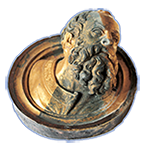Volume Graphics software is an established and powerful tool for the precise analysis and visualization of volume data generated for scientific research. Our application works equally well on data acquired with neutrons, x-rays or other sources. A traditional application field for CT and the subsequent analysis and visualization with VGSTUDIO MAX is the research of ancient mummies. Our latest...
Thanks to the latest developments in neutron sources and advancements in digital signal processing, the capabilities of available gamma spectrometry and neutron imaging sights have significantly improved during the last decades. Instrumental neutron techniques such as Prompt Gamma-ray Neutron Activation Analysis (PGAA) and Neutron Tomography (NT) are effective methods to obtain chemical...
Since the launch of its user access program in 1999, the Budapest Neutron Centre (BNC), has always been a key promoter of the collaboration between the cultural heritage domain and neutron scientists. The success of many EU-funded transnational access (TNA) programs (NMI3, NMI3-II, CHARISMA, IPERION CH) as well as the ANCIENT CHARM project highlighted the relevance of the element analysis,...
The ANTARES neutron imaging facility at Heinz Maier-Leibnitz Zentrum (MLZ) of TUM provides several imaging methods for cultural heritage research. Neutrons help when X-rays cannot penetrate samples, or deliver little to no contrast on the materials involved. Neutrons often provide complementary contrast to x-rays which makes them ideally suited to investigate samples like bones in chalk rock,...
Neutron imaging (NI) techniques are particularly suitable for the study of cultural heritage objects as they represent non-destructive and non-invasive testing methods complementary to X-ray methods. Nevertheless, NI methods are relatively rarely used for investigations of such objects, which is partially due to the method’s still low awareness level and the skepticism among museum curators,...
The NECTAR facility at MLZ (NEutron Computed Tomography And Radiography) uses thermal and fission neutrons, the latter by inserting a uranium converter plate in front of the beam tube nozzle, which is unique world-wide. The mean energy of the high-energy spectrum at about 1.8 MeV is obtained via fission reactions in the converter plates placed in front of the window of the SR10 beam tube. The...
The armour and the sword of the samurai have long been considered to be objects of absolute beauty, from both an aesthetic and a technological point of view. Much literature exists about Japanese swords, but far less is known about the technology of Japanese helmets, the kabuto. In the 15th century when large armies of foot soldiers were becoming more common and fighting on horseback was in...
It is about a rare 12th century enamelled reliquary from Mainz. This phylacterion is a pendant in the shape of a quatrefoil. It was found in the old town of Mainz in 2008 in an ancient dump. The conservation was performed in the laboratory of the Generaldirektion Kulturelles Erbe (GDKE), Direktion Landesarchäologie Mainz.
In total, the conservation work on the pendant took 500 hours.
The...
Metallic Buddhist objects are very common in Asian countries and traditionally used until today. States of the Buddha in different forms and manifestations or Stupas (reliquary shrines) are preserved for sometimes for more than 500 years in Asian temples, or in private collections. It is well-known that these hollow-cast objects made of various copper alloys have been filled during a...

